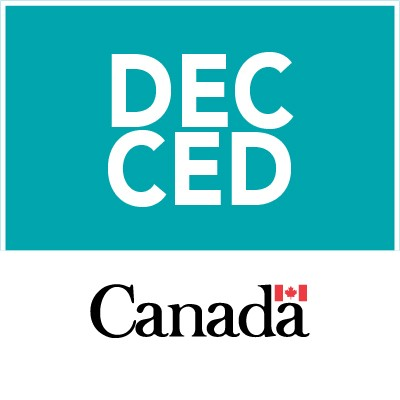G7 Summit: A Tectonic Shift in Global Alliances
June 18, 2025, 12:42 pm
The G7 summit in the Canadian Rockies was a stage set for drama. The world’s top economies gathered, but the spotlight was on one man: Donald Trump. His absence loomed large, casting shadows over discussions. The summit, meant to unite leaders against pressing global issues, instead revealed fractures in alliances.
The agenda was ambitious. Leaders aimed to tackle trade tensions, the war in Ukraine, and the escalating crisis in the Middle East. Yet, the specter of Trump’s trade tariffs hung over the proceedings like a dark cloud. Allies were left wondering: Is Trump with us or against us?
Trump’s trade policies have stirred a pot of discontent. His tariffs on steel, aluminum, and autos have strained relationships with allies. Canada, for instance, retaliated with its own tariffs, creating a tit-for-tat scenario. The G7, originally formed to foster cooperation, now faced internal discord.
As the summit commenced, leaders sought to present a united front. But without Trump, who had previously withdrawn U.S. support for joint communiques, the usual camaraderie felt fragile. A senior Canadian official hinted at plans for a joint statement on Ukraine, but the U.S. opposed it. The absence of consensus on such a critical issue was telling.
Ukraine was a focal point. President Zelenskyy was set to meet Trump, but that meeting evaporated with Trump’s early departure. The remaining leaders rallied around Zelenskyy, pledging support. British Prime Minister Keir Starmer announced new sanctions against Russia, a move that highlighted the divide between Trump and his counterparts. While the U.S. hesitated on further sanctions, the rest of the G7 stood firm against Russian aggression.
The summit also grappled with the specter of Iran. Tensions were high, with Israel launching airstrikes and Iran retaliating. Trump’s aggressive rhetoric on Iran raised alarms. French President Emmanuel Macron cautioned against regime change, warning it could lead to chaos. The G7 leaders were caught in a web of conflicting interests, trying to navigate a path through a minefield of geopolitical tensions.
In the absence of a unified statement on Ukraine, individual leaders took it upon themselves to reassure Zelenskyy. This patchwork approach reflected the underlying discord. The G7 was meant to be a cohesive unit, but it felt more like a collection of disparate voices.
Trump’s departure added to the drama. His absence was palpable, and the remaining leaders were left to pick up the pieces. The summit had become a balancing act, with leaders trying to maintain decorum while addressing their differences. The eye-roll from Italian Prime Minister Giorgia Meloni during a roundtable discussion captured the tension.
Trade was another contentious issue. Trump’s tariffs have created a rift that could widen further. The U.S. has imposed hefty tariffs on imports, while allies scramble to negotiate deals before the July 9 deadline. Japan and the EU are racing against time, hoping to strike agreements that could stave off further economic fallout.
Despite the turmoil, Trump’s team remained in Canada, suggesting that negotiations were still on the table. However, the odds of significant breakthroughs seemed slim. The G7 leaders were left grappling with the question of how to address Trump’s trade policies while trying to forge a united front against common threats.
The summit’s atmosphere was charged. Leaders were acutely aware of the stakes. The G7 was formed to address shared challenges, but with Trump’s unpredictable nature, the group faced an uphill battle. Analysts noted that the summit could be even more contentious than previous gatherings, given the backdrop of tariffs and geopolitical crises.
The G7’s mission is clear: to align on economic and geopolitical challenges. Yet, when the source of instability lies within the group, the task becomes daunting. Trump’s tariffs have not only strained relationships but have also complicated efforts to coordinate responses to global threats.
As the summit unfolded, the leaders were caught in a delicate dance. They needed to address pressing issues while managing the fallout from Trump’s policies. The absence of a joint statement on Ukraine was a stark reminder of the challenges they faced.
In the end, the G7 summit was a reflection of a world in flux. The leaders gathered in Canada were not just addressing immediate concerns; they were navigating a shifting landscape of alliances. The question remains: can the G7 adapt to the new reality, or will it fracture under the weight of conflicting interests?
The world watches as these leaders attempt to chart a course through turbulent waters. The G7’s ability to unite in the face of adversity will determine its relevance in the years to come. The summit may have ended, but the challenges it highlighted are far from resolved. The tectonic plates of global politics are shifting, and the G7 must find a way to stay grounded amidst the upheaval.
The agenda was ambitious. Leaders aimed to tackle trade tensions, the war in Ukraine, and the escalating crisis in the Middle East. Yet, the specter of Trump’s trade tariffs hung over the proceedings like a dark cloud. Allies were left wondering: Is Trump with us or against us?
Trump’s trade policies have stirred a pot of discontent. His tariffs on steel, aluminum, and autos have strained relationships with allies. Canada, for instance, retaliated with its own tariffs, creating a tit-for-tat scenario. The G7, originally formed to foster cooperation, now faced internal discord.
As the summit commenced, leaders sought to present a united front. But without Trump, who had previously withdrawn U.S. support for joint communiques, the usual camaraderie felt fragile. A senior Canadian official hinted at plans for a joint statement on Ukraine, but the U.S. opposed it. The absence of consensus on such a critical issue was telling.
Ukraine was a focal point. President Zelenskyy was set to meet Trump, but that meeting evaporated with Trump’s early departure. The remaining leaders rallied around Zelenskyy, pledging support. British Prime Minister Keir Starmer announced new sanctions against Russia, a move that highlighted the divide between Trump and his counterparts. While the U.S. hesitated on further sanctions, the rest of the G7 stood firm against Russian aggression.
The summit also grappled with the specter of Iran. Tensions were high, with Israel launching airstrikes and Iran retaliating. Trump’s aggressive rhetoric on Iran raised alarms. French President Emmanuel Macron cautioned against regime change, warning it could lead to chaos. The G7 leaders were caught in a web of conflicting interests, trying to navigate a path through a minefield of geopolitical tensions.
In the absence of a unified statement on Ukraine, individual leaders took it upon themselves to reassure Zelenskyy. This patchwork approach reflected the underlying discord. The G7 was meant to be a cohesive unit, but it felt more like a collection of disparate voices.
Trump’s departure added to the drama. His absence was palpable, and the remaining leaders were left to pick up the pieces. The summit had become a balancing act, with leaders trying to maintain decorum while addressing their differences. The eye-roll from Italian Prime Minister Giorgia Meloni during a roundtable discussion captured the tension.
Trade was another contentious issue. Trump’s tariffs have created a rift that could widen further. The U.S. has imposed hefty tariffs on imports, while allies scramble to negotiate deals before the July 9 deadline. Japan and the EU are racing against time, hoping to strike agreements that could stave off further economic fallout.
Despite the turmoil, Trump’s team remained in Canada, suggesting that negotiations were still on the table. However, the odds of significant breakthroughs seemed slim. The G7 leaders were left grappling with the question of how to address Trump’s trade policies while trying to forge a united front against common threats.
The summit’s atmosphere was charged. Leaders were acutely aware of the stakes. The G7 was formed to address shared challenges, but with Trump’s unpredictable nature, the group faced an uphill battle. Analysts noted that the summit could be even more contentious than previous gatherings, given the backdrop of tariffs and geopolitical crises.
The G7’s mission is clear: to align on economic and geopolitical challenges. Yet, when the source of instability lies within the group, the task becomes daunting. Trump’s tariffs have not only strained relationships but have also complicated efforts to coordinate responses to global threats.
As the summit unfolded, the leaders were caught in a delicate dance. They needed to address pressing issues while managing the fallout from Trump’s policies. The absence of a joint statement on Ukraine was a stark reminder of the challenges they faced.
In the end, the G7 summit was a reflection of a world in flux. The leaders gathered in Canada were not just addressing immediate concerns; they were navigating a shifting landscape of alliances. The question remains: can the G7 adapt to the new reality, or will it fracture under the weight of conflicting interests?
The world watches as these leaders attempt to chart a course through turbulent waters. The G7’s ability to unite in the face of adversity will determine its relevance in the years to come. The summit may have ended, but the challenges it highlighted are far from resolved. The tectonic plates of global politics are shifting, and the G7 must find a way to stay grounded amidst the upheaval.

